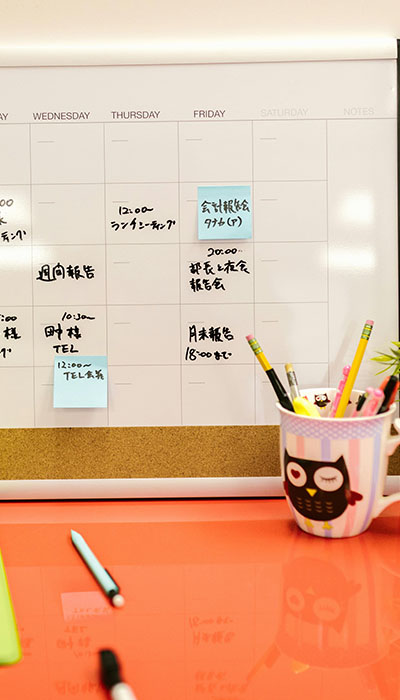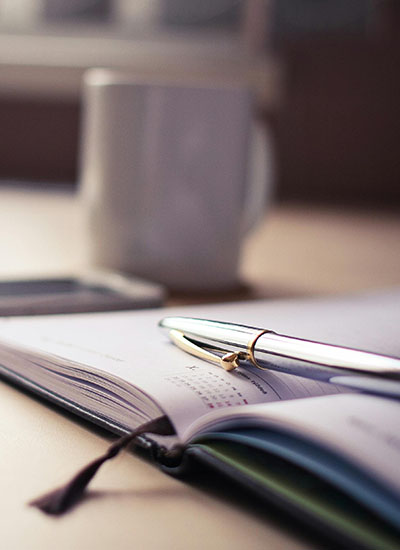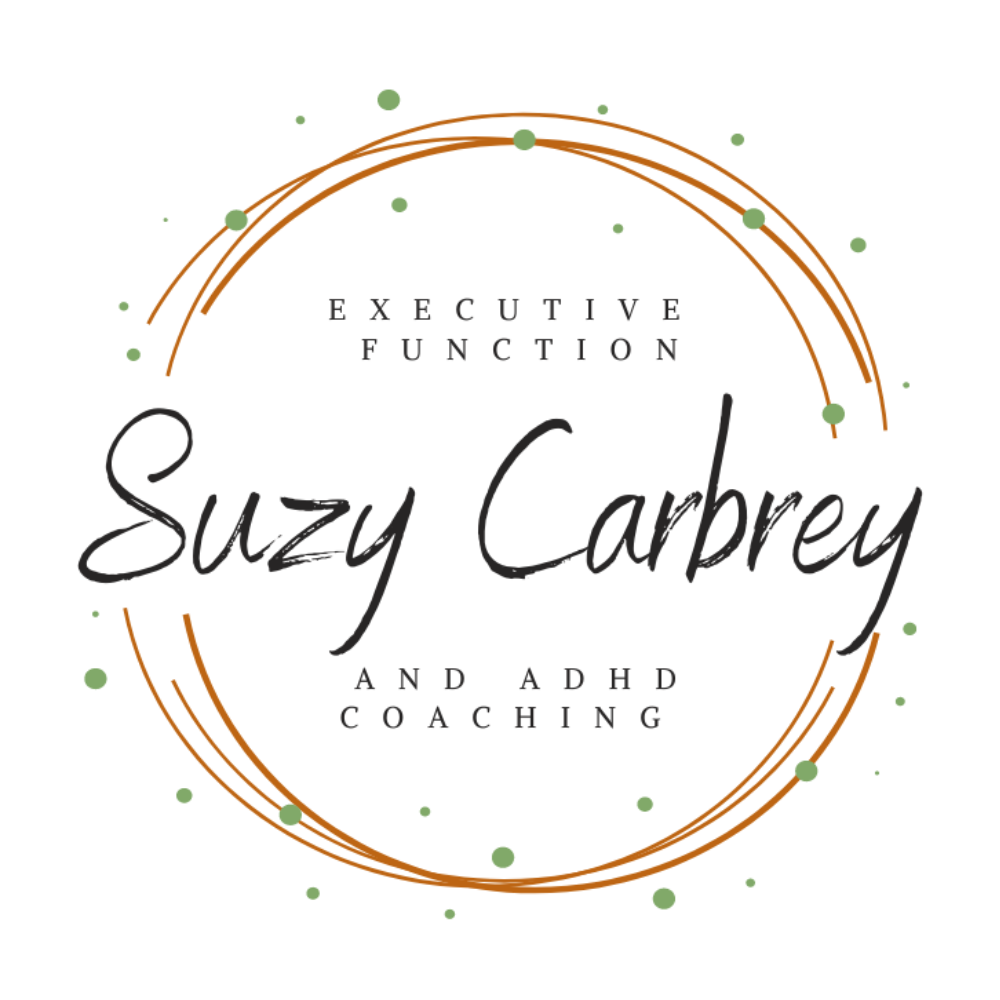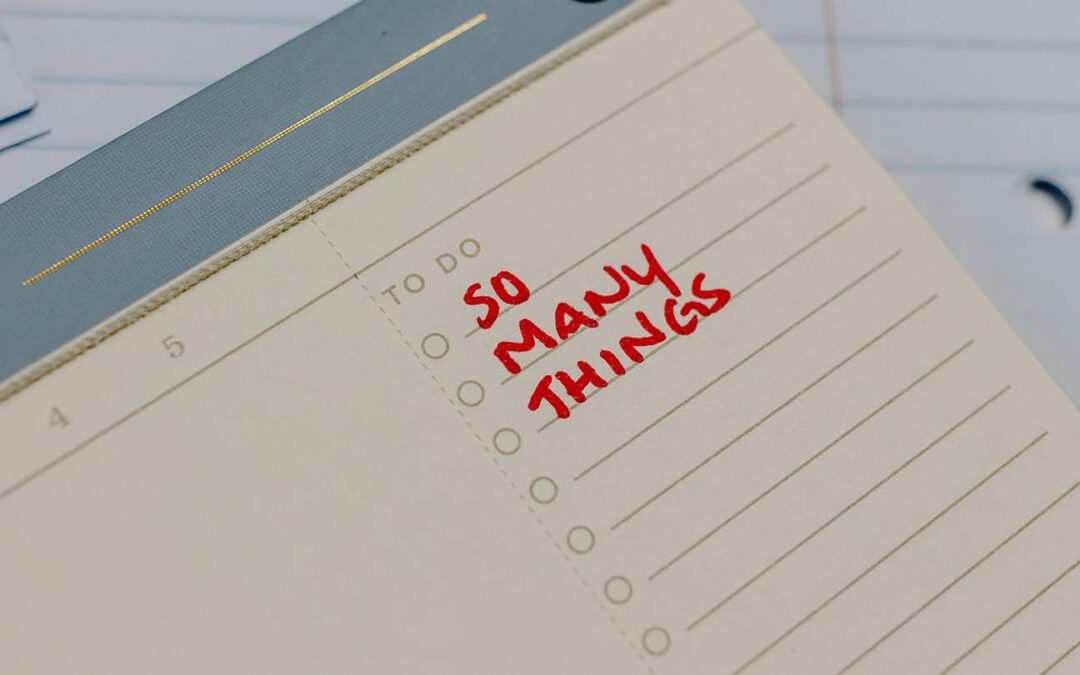Understanding the ADHD Challenge
1. Externalize Your Tasks
Why It Helps: Writing down tasks or using tools to track them takes the pressure off your mind by shifting responsibilities to a dependable system. This makes it less likely you’ll forget something important and helps lower mental stress. Keeping tasks external can make it easier to finish what needs to get done and reduce the anxiety of trying to remember everything.
How to Do It:
- Use a Planner: Whether it’s a traditional paper planner or a digital one like Google Calendar, having a centralized place to jot down tasks ensures you have a visual reminder of your responsibilities.
- Sticky Notes and Whiteboards: Place them in strategic locations around your home or office to serve as constant reminders of tasks that need attention.
- Digital Tools: Applications like Trello, Notion, or Todoist allow you to organize tasks into lists, boards, and calendars. These tools often come with features like deadlines, priority settings, and collaboration options.
2. Implement Time Blocking
Why It Helps: Time blocking means dividing your day into set time periods for specific activities. This approach helps you stay focused and avoid multitasking, which can often make things harder for people with ADHD. Time blocking works well with the executive function strategy of organizing your time, which has been proven to boost productivity and make managing tasks easier for those with ADHD.
How to Do It:
- Schedule Specific Times: Allocate blocks of time for work tasks, household chores, family time, and personal activities. For example, designate 9 AM to 11 AM for focused work tasks and 2 PM to 3 PM for meetings or collaborative work.
- Use Calendars Effectively: Utilize color-coding to differentiate between types of tasks, making it easier to visualize your day.
- Include Breaks: Incorporate short breaks between blocks to prevent burnout and maintain high levels of productivity.

3. Set Alarms and Reminders
Why It Helps: Reminders act as helpful prompts to start or switch tasks, keeping you on track during the day. Alarms and reminders can make up for challenges with working memory in ADHD, helping you stick to your schedule and get tasks done.
How to Do It:
- Smartphone Alarms: Set alarms for appointments, deadlines, and even for routine tasks like taking medication or starting a new project.
- Apps with Notification Features: Tools like Microsoft To Do, Google Keep, or Apple Reminders allow you to set notifications that can be customized for frequency and timing.
- Wearable Devices: Smartwatches can provide discreet reminders, vibrating to alert you without disturbing others around you.
4. Conduct a Daily Review
Why It Helps: A daily review helps you focus on what’s most important, make changes to your schedule if needed, and get ready for the day ahead. This practice keeps you organized and on track. Regularly reviewing your plans has been shown to improve time management and help people with ADHD reach their goals.
How to Do It:
- Evening Reflection: Spend five to ten minutes each evening reviewing what you accomplished and planning for the next day.
- Adjust Priorities: Identify the most critical tasks for the upcoming day and ensure they are prominently scheduled.
- Prepare Materials: Gather any necessary materials or information for the next day’s tasks to reduce morning stress and delays.
5. Prioritize with the Eisenhower Matrix
Why It Helps: The Eisenhower Matrix helps you distinguish between tasks that are urgent and those that are important. It allows you to focus on what truly matters while delegating or eliminating less important tasks. Using tools like the Eisenhower Matrix can simplify decision-making and task management, which are often challenging for people with ADHD.

How to Do It:
- Quadrant 1: Urgent and Important: Tasks that require immediate attention, such as work deadlines or family emergencies. Complete these tasks right away.
- Quadrant 2: Important but Not Urgent: Activities that support long-term goals, like planning, exercise, or skill development. Schedule time to work on these tasks.
- Quadrant 3: Urgent but Not Important: Tasks that need attention now but don’t significantly contribute to your goals, such as certain emails or calls. Delegate these tasks if possible.
- Quadrant 4: Not Urgent and Not Important: Activities that can be minimized or eliminated, like excessive social media use. Consider removing these from your schedule.
6. Establish Consistent Routines
Why It Helps: Routines create structure, making it easier to build habits and start tasks without overthinking. Sticking to routines has been shown to help adults with ADHD manage their time better and procrastinate less.
How to Do It:
- Morning and Evening Routines: Develop consistent routines for starting and ending your day, incorporating activities like exercise, meal preparation, and relaxation.
- Task-Specific Routines: Create specific routines for recurring tasks, such as a set procedure for preparing meals or organizing your workspace.
- Flexibility Within Structure: While consistency is key, allow for some flexibility to accommodate unexpected events without feeling overwhelmed.
7. Break Tasks into Manageable Steps
Why It Helps: Big tasks can feel overwhelming and make you want to put them off. Breaking them into smaller, easier steps makes them less scary and more doable. This approach works well for managing ADHD because it lowers anxiety and makes it easier to start and finish tasks.
How to Do It:
- Define Clear Steps: Outline each step required to complete a task. For example, if you need to write a report, steps might include research, outlining, drafting, and editing.
- Set Mini-Deadlines: Assign deadlines to each step to maintain momentum and ensure steady progress.
- Celebrate Small Wins: Acknowledge the completion of each step to stay motivated and reinforce positive behavior.
8. Use Visual Cues and Organizational Tools
Why It Helps: Visual cues can help improve memory and serve as constant reminders for tasks and deadlines. Many people with ADHD benefit from visual tools because they match their learning style. Using visual organizers has been shown to boost memory and make managing tasks easier by offering clear and immediate reminders.
How to Do It:
- Calendars: Use wall calendars or digital calendars with visual markers for important dates and deadlines.
- Color-Coding: Assign different colors to various categories of tasks (e.g., work, family, personal) to quickly identify and prioritize them.
- Bullet Journals: A customizable method for tracking tasks, habits, and goals in a visually engaging format.
9. Engage an Accountability Partner
Why It Helps: Having someone to hold you accountable can boost motivation, offer support, and help you stay focused on your goals and tasks. Accountability partnerships use social support to make it easier to stick to tasks and achieve your goals, which is especially helpful for people with ADHD.

How to Do It:
- Find a Partner: This could be a friend, family member, colleague, or coach who understands your challenges and goals.
- Regular Check-Ins: Schedule regular meetings or calls to discuss your progress, challenges, and upcoming tasks.
- Set Mutual Goals: If both parties set goals, you can mutually support each other’s progress and hold each other accountable.
10. Practice Mindfulness and Stress Reduction Techniques
Why It Helps: Mindfulness practices can help you focus better, control impulses, and manage emotions, which are all useful for handling ADHD symptoms. Studies show that mindfulness and meditation can lead to big improvements in attention, executive function, and emotional control for people with ADHD.
How to Do It:
- Mindful Breathing: Spend a few minutes each day focusing on your breath to center your attention and calm your mind.
- Meditation: Engage in guided or unguided meditation sessions to improve overall mindfulness and reduce stress.
- Physical Activity: Incorporate activities like yoga or tai chi, which combine physical movement with mindful practices.
Tools and Apps to Enhance Organization
Note: Names link to websites, and open in a new tab. These are not affiliate links.
- Trello: A visual project management tool that uses boards, lists, and cards to help you organize tasks and collaborate with others.
- Notion: An all-in-one workspace that allows you to create notes, databases, calendars, and task lists.
- Todoist: A powerful task manager that lets you prioritize tasks, set deadlines, and track your progress.
- Google Calendar: A versatile calendar app that integrates with other Google services, making it easy to schedule and receive reminders.
- Evernote: A note-taking app that helps you organize information, capture ideas, and keep track of important documents.
Specific Tips for Parents with ADHD
Balancing parenting responsibilities alongside personal and professional tasks can be particularly challenging. Here are tailored strategies:
- Shared Calendars: Use family calendars to keep track of everyone’s schedules, appointments, and activities.
- Consistent Routines: Establish daily routines for meals, homework, and bedtime to create predictability and reduce chaos.
- Delegation: Assign age-appropriate tasks to children to foster responsibility and reduce your own burden.
- Quality Time: Schedule dedicated time for family activities to ensure meaningful interactions amidst busy schedules.
- Simplify and Declutter: Keep the home environment organized to minimize distractions and create a calming space for everyone.

Specific Tips for Professionals with ADHD
Managing work responsibilities effectively is crucial for professional success. Consider these strategies:
- Prioritize Work Tasks: Use prioritization techniques to focus on high-impact tasks that align with your professional goals.
- Limit Distractions: Create a workspace that minimizes interruptions. This might include noise-canceling headphones, a tidy desk, or designated quiet hours.
- Use Project Management Tools: Tools like Asana or Monday.com can help you track project progress, assign tasks, and collaborate with colleagues.
- Set Clear Boundaries: Define specific work hours and communicate them to colleagues and family to maintain a healthy work-life balance.
- Regular Breaks: Incorporate short breaks throughout your workday to maintain focus and prevent burnout.
Building Consistency and Habits
Implementing these strategies requires consistency and patience. Here are some tips to build and maintain effective habits:
- Start Small: Introduce one or two strategies at a time to avoid feeling overwhelmed. Gradually incorporate more as you become comfortable.
- Track Your Progress: Use journals or apps to monitor your adherence to new habits and celebrate your successes.
- Stay Flexible: Understand that some days will be more challenging than others. Adapt your strategies as needed without being too hard on yourself.
- Seek Professional Support: Consider working with a coach or therapist who specializes in ADHD to receive personalized guidance and support.
Overcoming Common Obstacles
Even with the best strategies, certain obstacles can hinder your progress. Here’s how to address some common challenges:

- Procrastination: Break tasks into smaller steps and set immediate deadlines to create a sense of urgency.
- Overwhelm: Prioritize tasks and focus on one thing at a time. Use deep breathing or mindfulness techniques to calm your mind.
- Forgetfulness: Rely on external reminders and regularly update your task lists to keep important tasks visible.
- Impulsivity: Practice mindfulness and pause before making decisions to ensure thoughtful actions.
Conclusion
Managing ADHD as a parent or professional can be tough, but with the right strategies, you can keep tasks from slipping through the cracks. By externalizing tasks, using time blocking, setting reminders, doing daily reviews, prioritizing tasks, creating routines, breaking tasks into smaller steps, using visual cues, having accountability partners, and practicing mindfulness, you can improve your organizational skills and stay in control of your responsibilities.
The key is gradual progress. Start by adding one or two strategies to your daily routine and build from there. Celebrate your progress, no matter how small, and be patient with yourself as you develop new habits. With persistence and the right tools, you can manage your tasks, reduce stress, and lead a more organized and fulfilling life.
Learn more with Online Coaching for Executive Functioning / ADHD
Ready to gain control and enhance your executive functioning? As an experienced and compassionate coach, I specialize in providing support for executive functioning and ADHD. To embark on your journey, please reach out to me at 708-264-2899 or email hello@suzycarbrey.com to schedule a FREE 20-minute discovery call consultation.
With a background as a speech-language pathologist, I have a strong foundation in executive functioning coaching. My graduate degree program in SLP placed a significant emphasis on cognition, including executive functions, and I have years of experience in medical rehabilitation, providing cognitive-communication therapy. Additionally, I have completed an ADHD Services Provider certification program, I am Solutions-Focused Brief Therapy Diamond Level 1 certified and I am trained in the Seeing My Time® executive functioning curriculum.
Experience the convenience and effectiveness of online coaching, backed by studies that demonstrate equal results to in-person services. Parents, professionals, and emerging adults love the convenience and privacy of receiving coaching from their own homes.
Whether you reside in Chicago, Milwaukee, Indianapolis, Kansas City, or anywhere else around the globe, I am here to assist you. Schedule your discovery call consultation today, and I eagerly anticipate the opportunity to work with you!
Please note that although I am a certified speech-language pathologist, all services Suzy Carbrey LLC provides are strictly coaching and do not involve clinical evaluation or treatment services. If you require a formal speech therapy evaluation and treatment, please inform me, and I can provide appropriate recommendations.


This was beautiful Admin. Thank you for your reflections.
Thanks!
I’m often to blogging and i really appreciate your content. The article has actually peaks my interest. I’m going to bookmark your web site and maintain checking for brand spanking new information.
Great!
This is my first time pay a quick visit at here and i am really happy to read everthing at one place
Looking forward to your next post. Keep up the good work!
Thanks!
Nice post. I’m learning new and challenging things on websites like this.
Good to hear!
The information is up-to-date and easy to understand.
Thanks!
I truly appreciate your technique of writing a blog. I added it to my bookmark site list and will
Thanks
Awesome! Its genuinely remarkable post, I have got much clear idea regarding from this post
Thanks!
I very delighted to find this internet site on bing, just what I was searching for as well saved to fav
I love the personal examples — they made the advice relatable.
Thanks!
Thanks for including real user stories — very relatable.
This post is a great starting point for anyone new to the subject.
Nice balance of theory and practical advice. Well done!
Great content! The list of tools at the end was a lovely bonus.
Thanks!
I appreciated the formatting — easy to skim and still informative.
Nice balance of theory and practical advice. Well done!